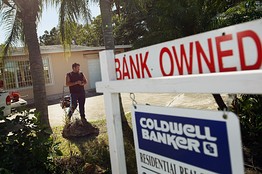
Q: I’m buying a house and my agent says that the seller wants me to remove my contingencies. How do I do that?
A: Most real estate contracts contain numerous contingencies, mostly in favor of the buyer, revolving around things like investigation of the property condition and obtaining financing for the purchase. If the buyer is unable to obtain financing or disapproves of the condition of the property, then the buyer can usually cancel the purchase agreement without penalty and have their good faith deposit returned. If, on the other hand, the buyer is satisfied with the property condition or has received final loan approval, then the buyer acts to remove these contingencies so that they can no longer be claimed as a reason to cancel the contract. How you do this depends on the terms of the contingency removal provisions in your contract.
There are two general ways that contracts provide for contingency removal: active removal and passive removal. With the active method the contingency period usually stays open (even if the stated time period has lapsed) until the buyer removes the contingency in writing or the seller provides the buyer with a written notice to perform (the CAR purchase agreement provides for this method). With the passive method the contingency is deemed removed when the contingency period lapses unless the buyer objects or cancels the contract prior to the lapse (this is the usual method provided for in REO agreements). So one method of removal requires an affirmative act and the other does not. It is essential that you read your purchase agreement and consult with your agent to determine which method applies in your situation.
Call Karen Magliocco of Coldwell Banker Napa Valley (707) 249-1600 with your real estate questions.
Q: I negotiated a 3% closing cost credit from the seller and want to know what closing costs can be covered by the credit?
A: A closing cost can be used for all recurring (interest, taxes and insurance) and nonrecurring (i.e: appraisal, title and escrow) closing costs associated with the purchase of your property. If the actual closing costs are less than the seller credit, the subject credit will be reduced to the amount of the true closing cost.
For answers to your questions about home loans, contact Mortgage Solutions, Inc., (707) 259-5272.
Q: I just received an offer on my house and the buyer is requesting that I fill out a new Transfer Disclosure Statement (TDS) even though I have already filled one out. Why can’t we use the TDS that I filled out when I put my house on the market?
A: State Senate Bill 837, which was signed into law last year, mandated some changes in the TDS that took effect on January 1, 2012. Real property sales which close escrow after the effective date should use the newly revised form. The revisions include a checkbox for a seller to disclose whether the property has water-conserving plumbing fixtures such as low-flow toilets, shower heads and faucets. The revision also informs the buyer that by January 1, 2017, a single family residence built on or before January 1, 1994, must generally be equipped with water-conserving plumbing fixtures. Further, if the residence is altered or improved on or after January 1, 2014, the installation of waterconserving plumbing fixtures must be a condition of final permit approval. I suggest that you double check with your listing agent to determine whether you have completed the revised form and whether the buyer’s request that you fill out a new TDS stems from this change in the law.
Call Karen Magliocco of Coldwell Banker Napa Valley (707) 249-1600 with your real estate questions.
Q: Are there any government aided programs to help first time homebuyers’ in Napa?
A: Both Napa County and The City of Napa have homebuyer assistance programs for qualified buyers. The programs can vary depending on the availability of funds. We suggest you contact the County and Napa housing divisions directly regarding the qualification requirements and current availability of funds. If you are interested in attending a seminar regarding the homebuyer’s assistance programs, Coldwell Banker Brokers of the Valley will be hosting a seminar featuring both The City of Napa and the County’s housing departments on Wednesday, March 7th at 7:00pm at our Napa office located at 1775 Lincoln Avenue. For more information, please call (707) 249-1600 or visit www.silverado-property.com
Call Karen Magliocco of Coldwell Banker Napa Valley (707) 249-1600 with your real estate questions.
Q: When I sell my home I don’t want to be responsible to the buyer for any repairs. How do I sell my property “As-Is”?
A: You can certainly sell your property As-Is but there are a number of qualifications and pitfalls that you need to be aware of. The term “As-Is” is normally used to denote the purchase of a property in its present physical condition with no liability on the part of the seller to make repairs or upgrades to the property as a condition of the sale. However it all depends on how your contract reads.
Not all purchase agreements are created equal. For example the California Association of Realtors purchase agreement provides that the property is to be sold in its present physical condition, but another publisher’s standard purchase agreement states that the seller agrees to deliver the property with its major systems (e.g. electrical, plumbing) in working order, its roof free of leaks and all windows and shower enclosures in good repair. In the latter case you would need to use an As-Is addendum to the purchase agreement.
Even if you have an As-Is agreement, the purchase contract will usually provide the buyer with the right to investigate the condition of the property as a contingency of the purchase. Further the seller must disclose known defects, maintain the property during escrow, and California law obliges sellers to attend to certain items such as smoke detectors and water heaters. Therefore it is important to consult with a real estate professional or legal counsel to insure that your purchase agreement meets your needs and that you are complying with relevant laws.
Call Karen Magliocco of Coldwell Banker Napa Valley (707) 249-1600 with your real estate questions.
Q: We read that the government once again adjusted FHA and VA limits for Napa County, could you please comment on the changes?
A: Congress did indeed recently pass legislation that adjusted both FHA and VA loan limits throughout Napa County. For a single family residence, the new FHA loan limit in Napa County is $729,750 through December 31, 2013. In regards to VA loans, the loan limit for the Napa County was decreased from $530,000 to $460,000, effective January 1, 2012.
Call Karen Magliocco of Coldwell Banker Napa Valley (707) 249-1600 with your real estate questions. .
Q: I have been trying to buy a home and find myself in many multiple offer situations. How can I be sure that the terms of my offer aren’t divulged to my competitors?
A: While your agent, as your fiduciary, probably has a duty to keep confidential the terms of your offer except as necessary to present your offer to the seller, the seller and the seller’s agent usually do not owe you the same duty of confidentiality. In other words, the seller can shop your offer. Policies differ from broker to broker on how this sensitive issue is handled, so before you write your offer make sure that your agent determines what the listing broker’s policy will be regarding the confidentiality of your offered terms. You also may consider requiring the seller and seller’s agent to sign a confidentiality agreement with you prior to presenting your offer. The California Association of Realtors prints a simple confidentiality agreement which prohibits all parties from disclosing the price and terms of an offer (and even the buyer’s name) to anyone else prior to, during the pendency of, or after completion of the transaction except as required by law or MLS rules. If you plan on using a confidentiality agreement, make sure it is signed by the seller and seller’s agent before the offer is presented.
Call Karen Magliocco of Coldwell Banker Napa Valley (707) 249-1600 with your real estate questions.
Q: How do the new loan limits affect our potential purchase of a home?
A: Effective October 1, 2011, FHA reduced the maximum FHA loan limits from $729,270 to $592,250. Therefore, assuming that you elect to put down the minimum FHA required down payment of 3.5%, the maximum sales price using FHA financing in Napa County would be $613,730. Be advised that a borrower can always elect to increase their down payment and purchase a home in excess of the aforementioned figure.
Call Karen Magliocco of Coldwell Banker Napa Valley (707) 249-1600 with your real estate questions.
About Karen Magliocco

 in their homes as renters. There are important reasons why Napa Valley homeowners should be interested in the success or failure of BoA’s approach.
in their homes as renters. There are important reasons why Napa Valley homeowners should be interested in the success or failure of BoA’s approach.







